API Debugging: Best Practices for Fetching Test Data from a Database
Effective API testing is crucial for reliable software performance. This article explores fetching test data from databases using EchoAPI for accurate debugging, highlighting its realism, consistency, scalability, and best practices for robust application development.
In software development, effective testing is crucial for ensuring the reliability and performance of APIs. One key aspect of testing APIs is having access to relevant and accurate test data. In this article, I will explore how to fetch test data from a database in EchoAPI for API debugging, discuss the advantages of this approach, and share some best practices.
Why Choose Database-Driven Test Data?
Utilizing test data stored in a database offers several advantages when debugging APIs:
-
Realism: Test data obtained from live databases often reflects real-world scenarios more accurately, helping to provide an accurate depiction of how the API performs under various conditions.
-
Consistency: By using data stored in a database, you can ensure consistency across test environments between different sessions. This consistency is vital for reproducing issues and verifying fixes.
-
Scalability: Databases can handle large amounts of data, making it easier to conduct extensive testing or performance benchmarking, especially for complex scenarios.
-
Dynamic Data: With the capability to easily modify and update records in a database, you can quickly adapt to new requirements or edge cases without the need to reconstruct APIs or simulate data.
Steps to Fetch Test Data from a Database
1. Establish Database Connection
- Configure the default database connection.
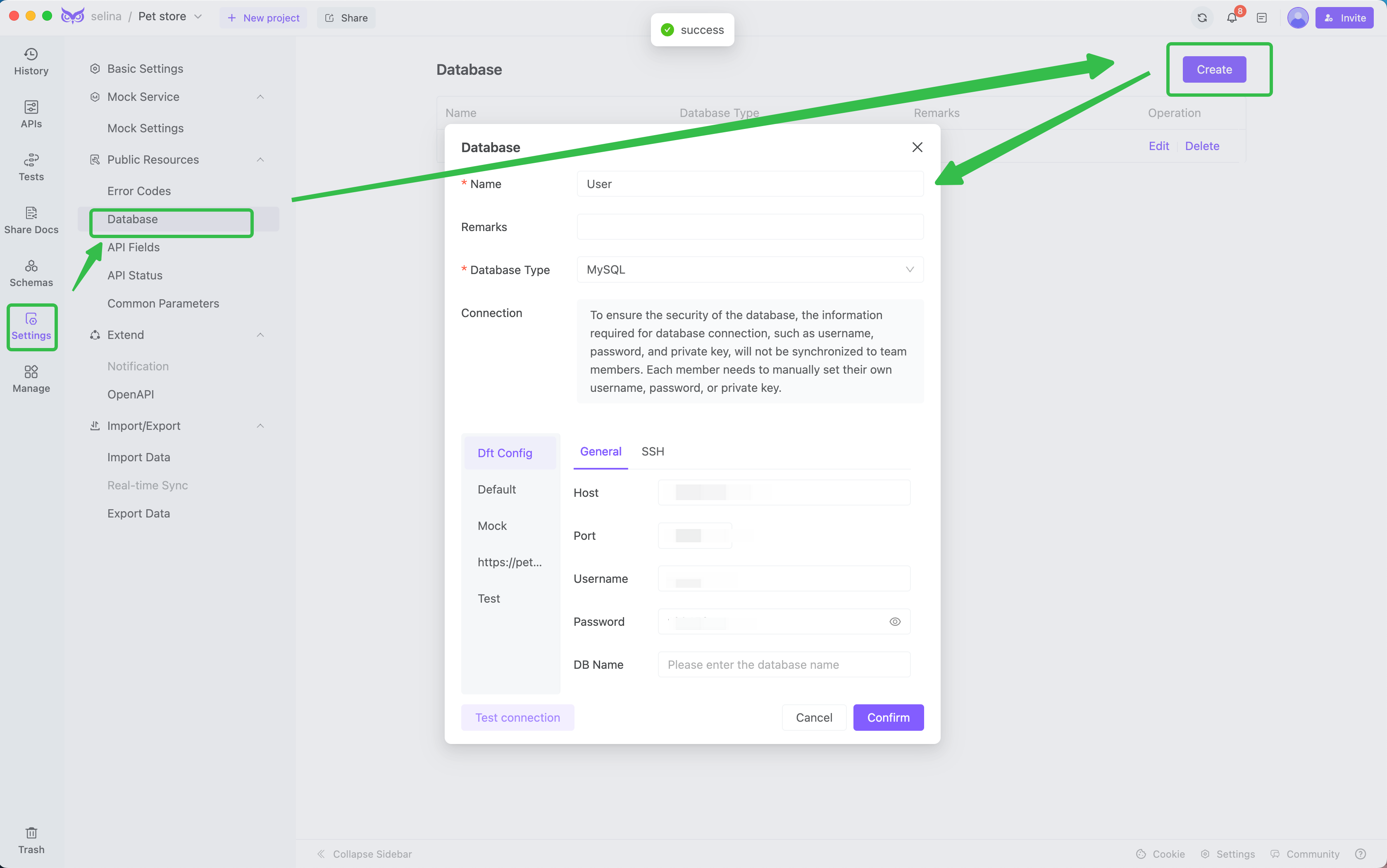
- Set up different database connections for various environments (development, testing, production).For example, you can configure a separate database connection for Test_environment or choose to use the default configuration.

2. Add Database Operations in Pre-request and Post-response
- Select the required database.
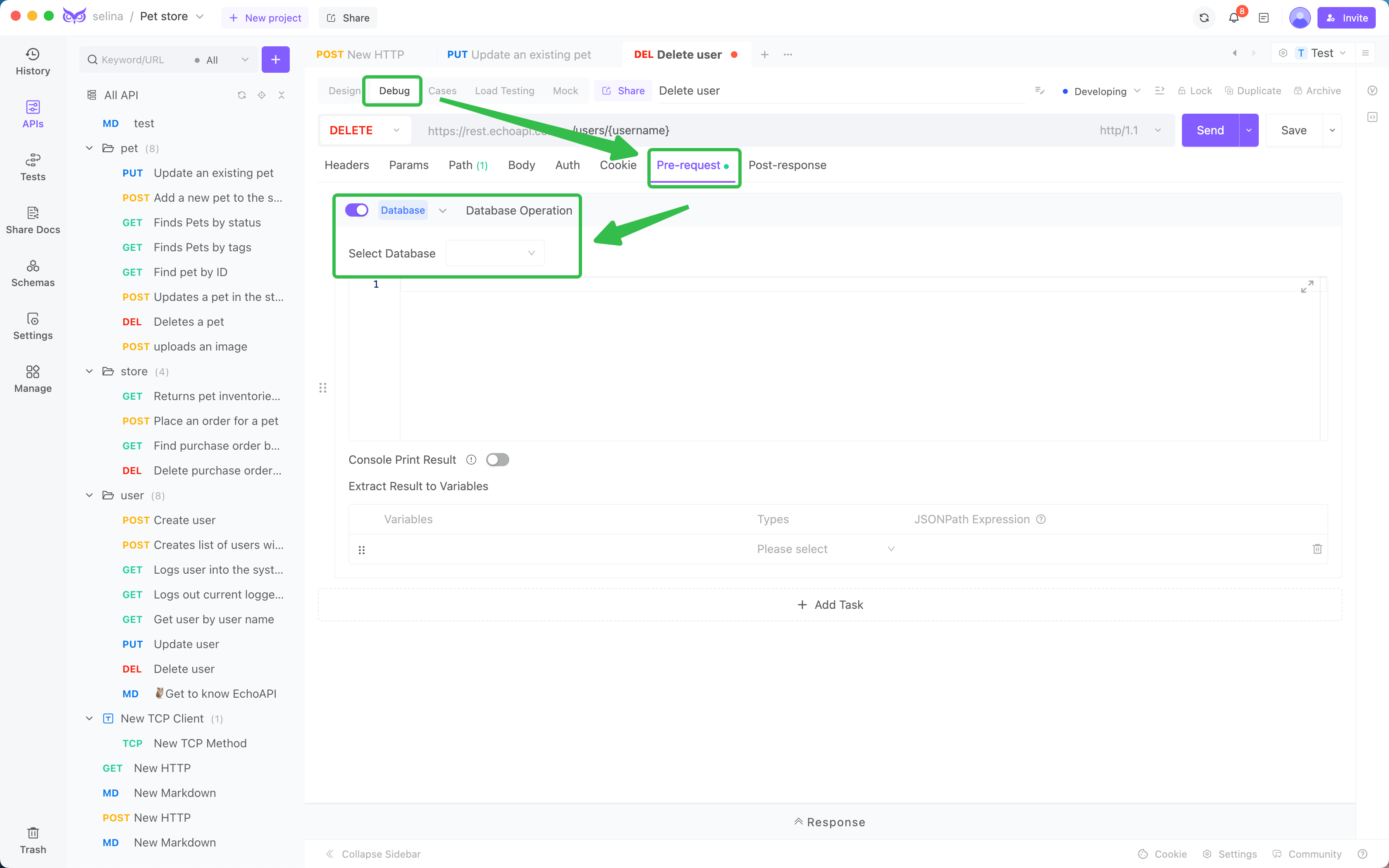
- Write SQL queries to retrieve the necessary test data from the database.
Note: You can toggle the switch and click "Send" in advance to view the query results from the console.
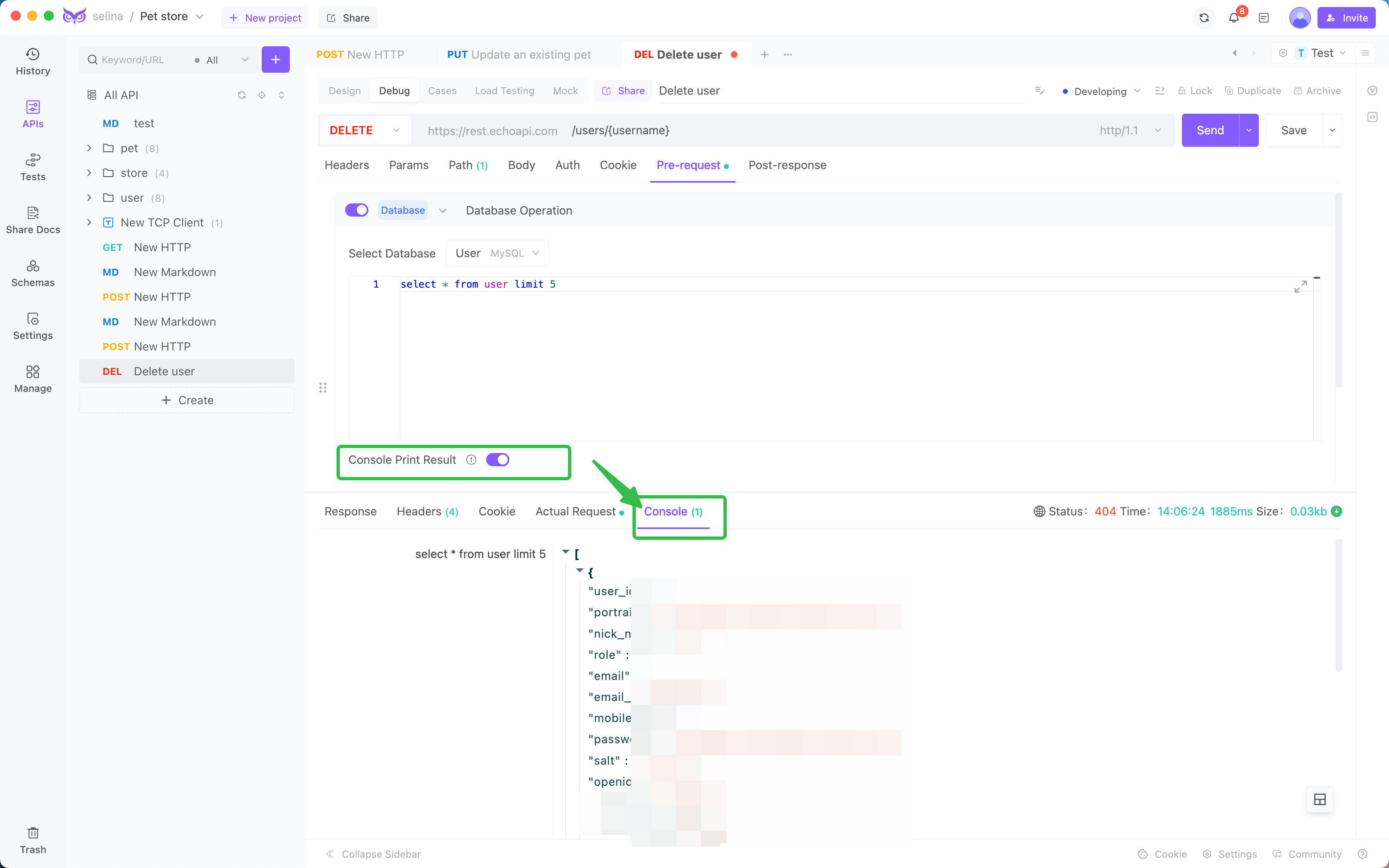
- Set the required data as variables.

- Reference these variables in the API request parameters or in assertions.
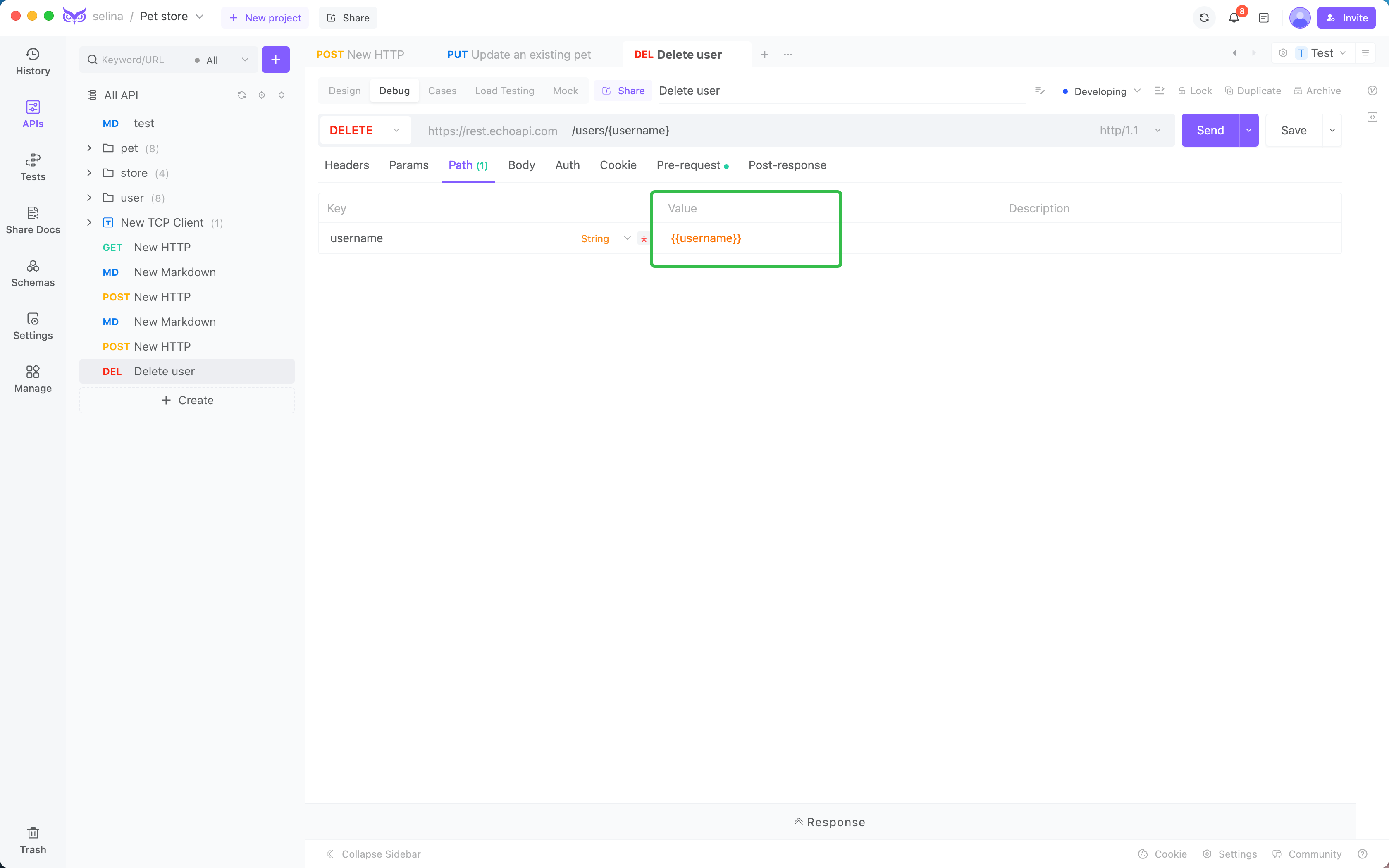
Best Practices for Database-Driven API Testing
For example, to test a "Delete User" API, you can fetch real user data from the database as a request parameter. After sending the request, verify the user’s status in the database to ensure they have been successfully deleted.
Here’s a sample request:
curl --request DELETE \
--url https://rest.echoapi.com/users/{{username}} \
--header 'Accept: */*' \
--header 'Accept-Encoding: gzip, deflate, br' \
--header 'Connection: keep-alive' \
--header 'User-Agent: EchoapiRuntime/1.1.0'
Step-by-Step Execution:
1.Add Database Connection in Pre-request:
Ensure you've configured the database connection for the test environment.
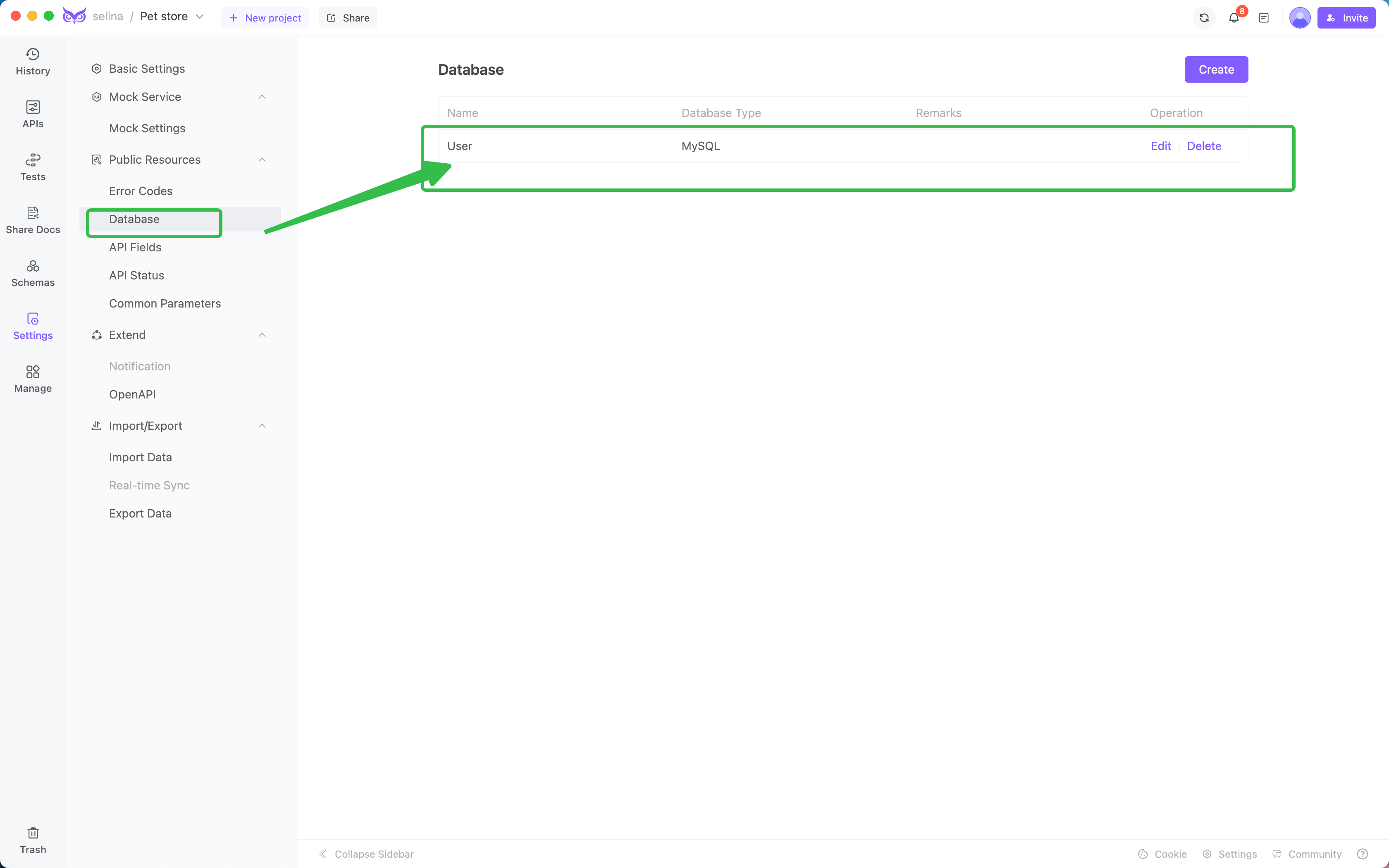
2.Query and Set Variables:
Query the username of the user to be deleted based on their email, and assign it to a variable.
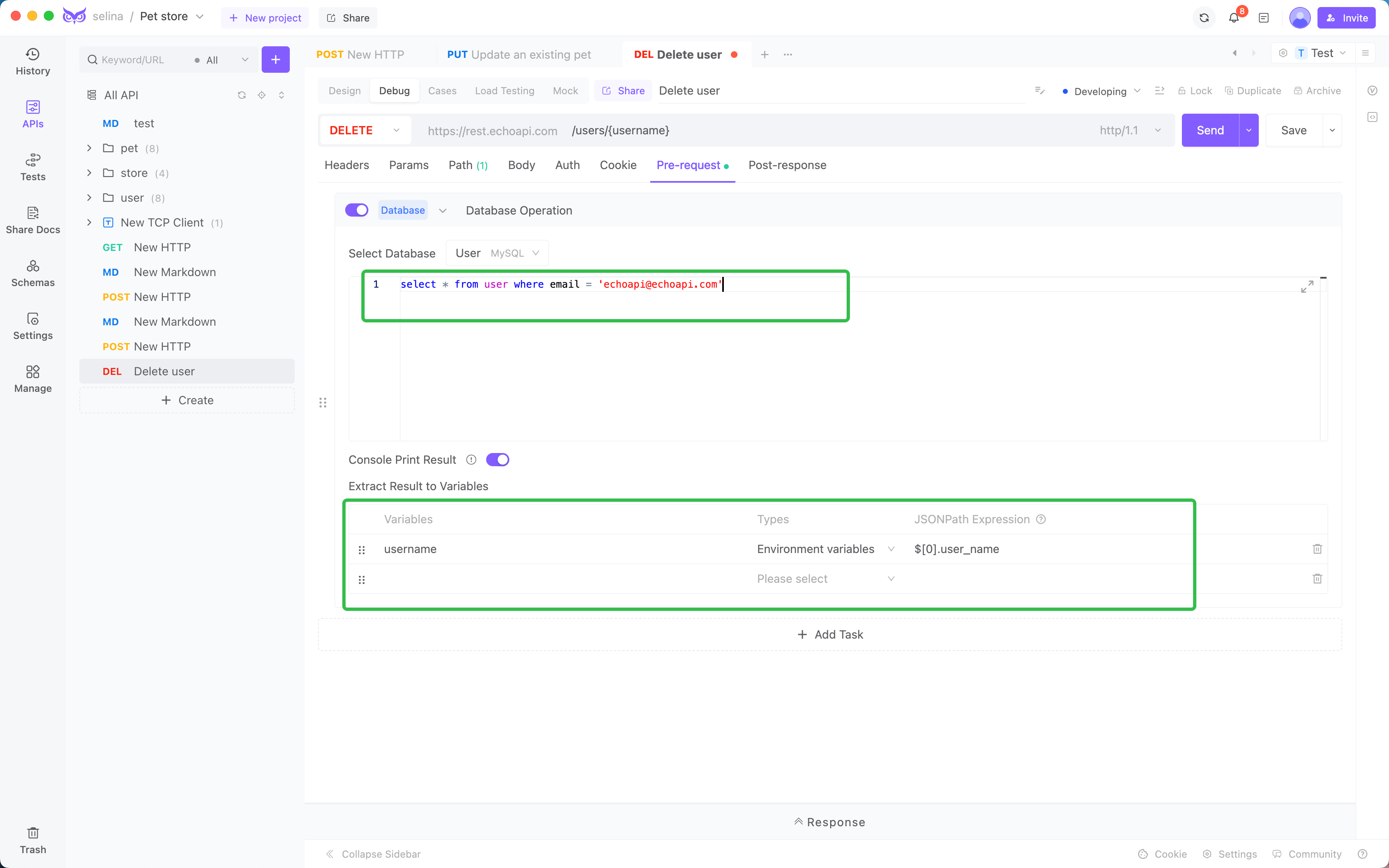
3.Reference Variables:
Use this variable in the API request parameters.
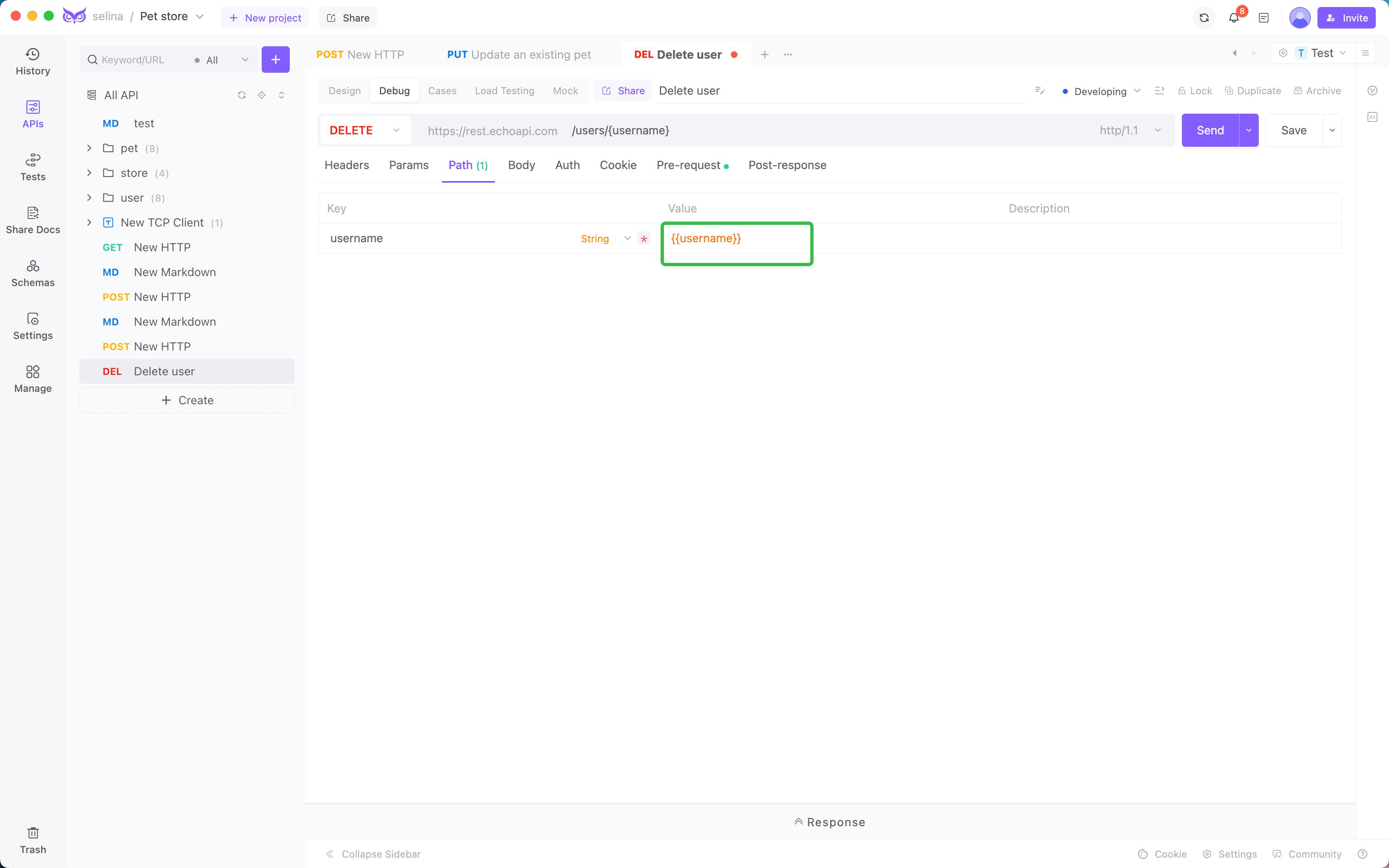
4.Validate Deletion:
In the post-response section, add a database operation to check whether the user still exists and print the results.

5.Click “Send” to send the request and view the API response content.
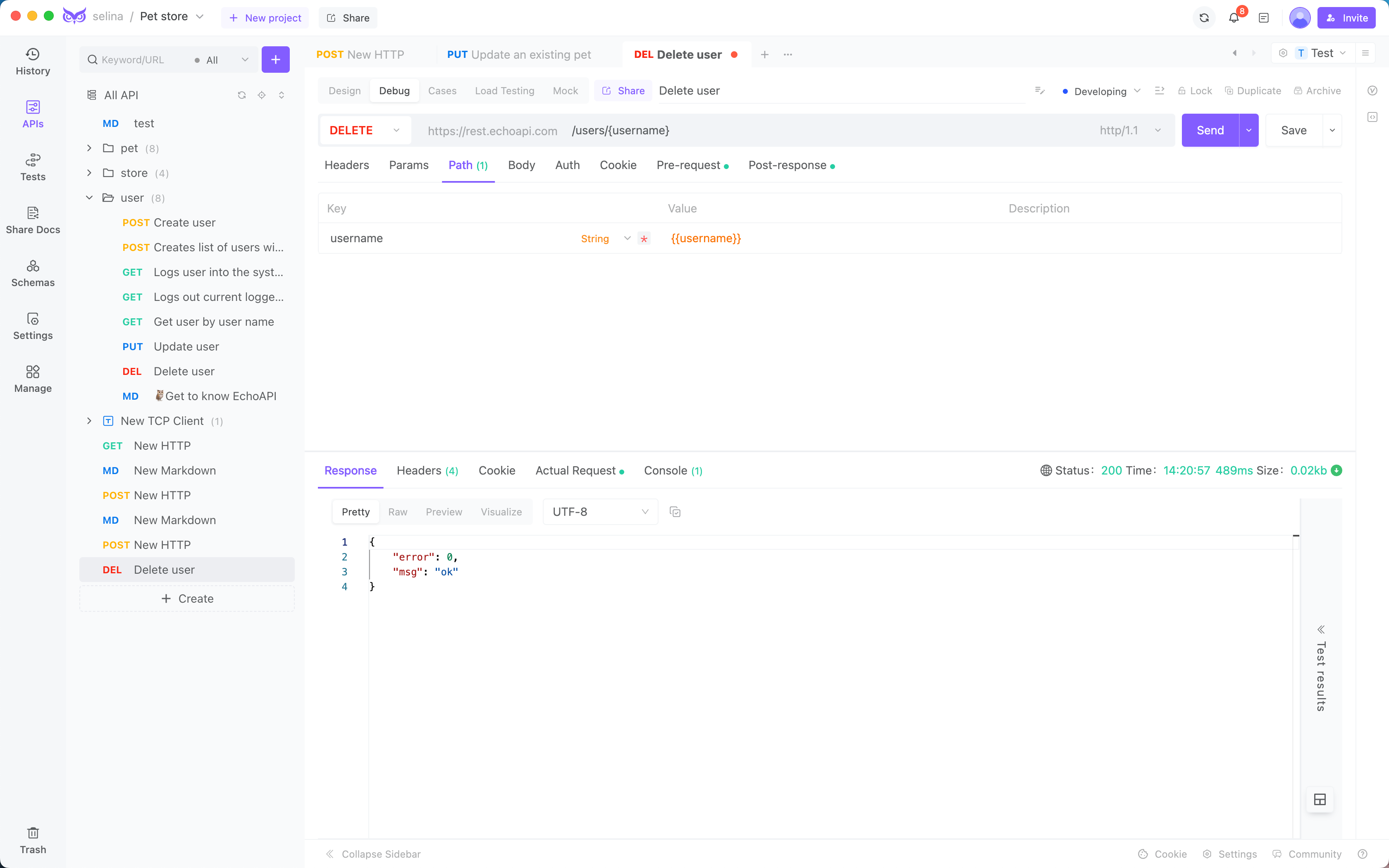
API Response and Console Output
Upon successful execution, you’ll see the API's response along with console output confirming whether the user has been deleted.
The first printed output displays the data retrieved from the database before the API request, and the second printed output shows the data retrieved after the request. It is noted that the printed result is empty, indicating that the API functionality is working correctly and the user has been successfully deleted.

Conclusion
Retrieving test data from a database is a powerful API debugging technique that significantly enhances the accuracy and reliability of tests. By following the steps and best practices outlined in this article, you can ensure that your APIs perform correctly across various scenarios, ultimately building a more robust application. As software systems become increasingly complex, leveraging real data will become even more important during the testing and debugging phases.




 EchoAPI for VS Code
EchoAPI for VS Code

 EchoAPI for IntelliJ IDEA
EchoAPI for IntelliJ IDEA

 EchoAPl-Interceptor
EchoAPl-Interceptor

 EchoAPl CLI
EchoAPl CLI
 EchoAPI Client
EchoAPI Client API Design
API Design
 API Debug
API Debug
 API Documentation
API Documentation
 Mock Server
Mock Server








